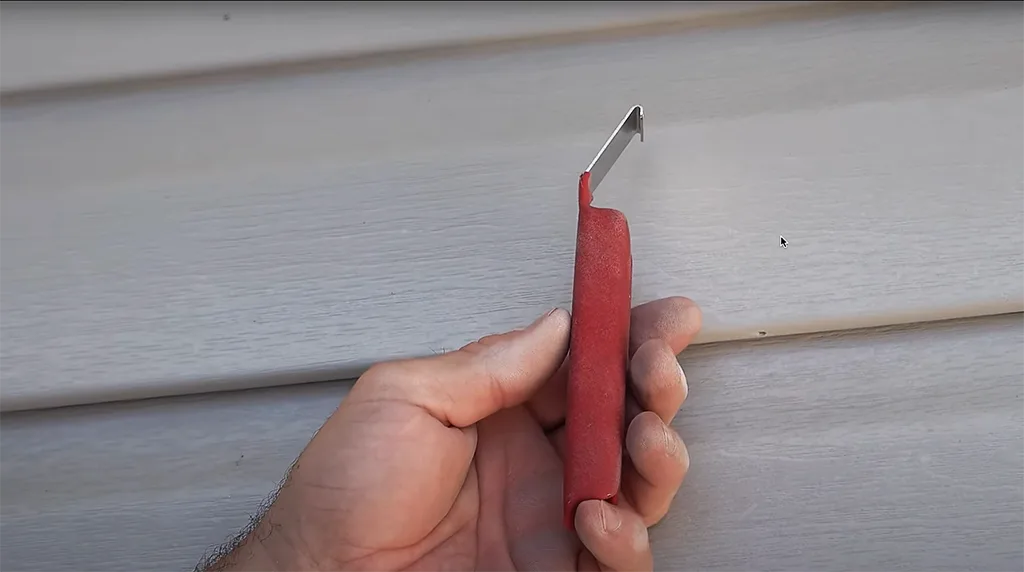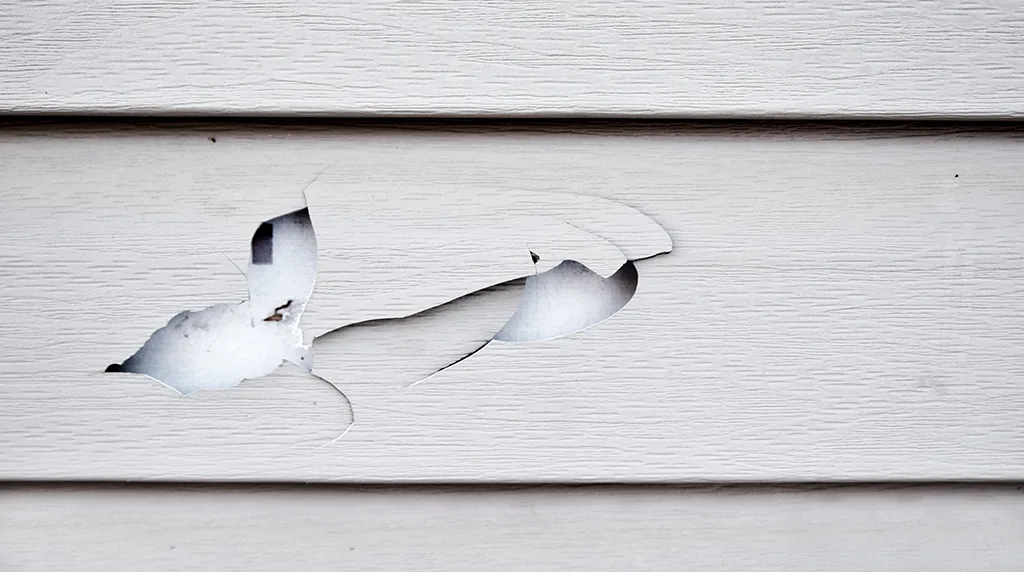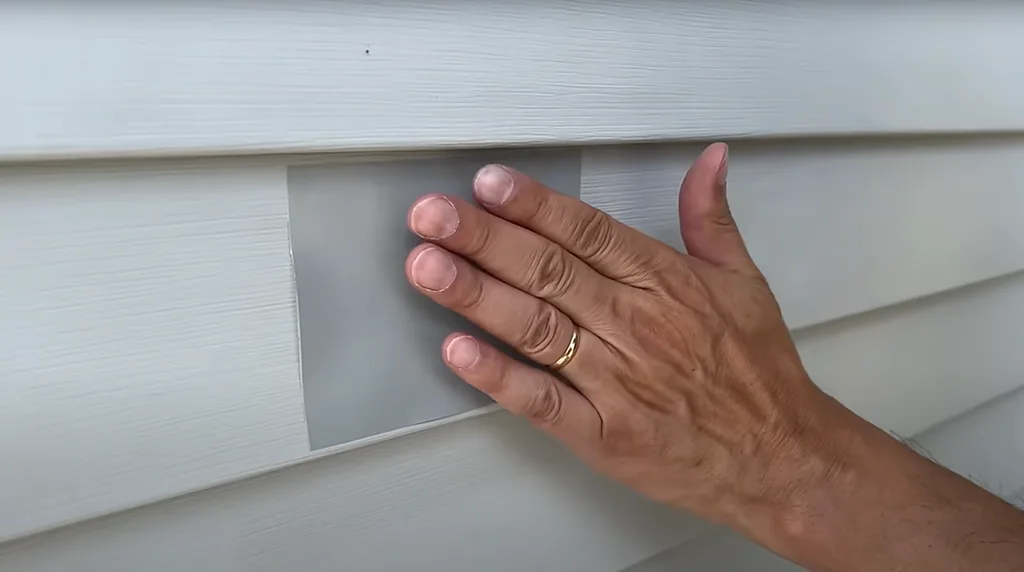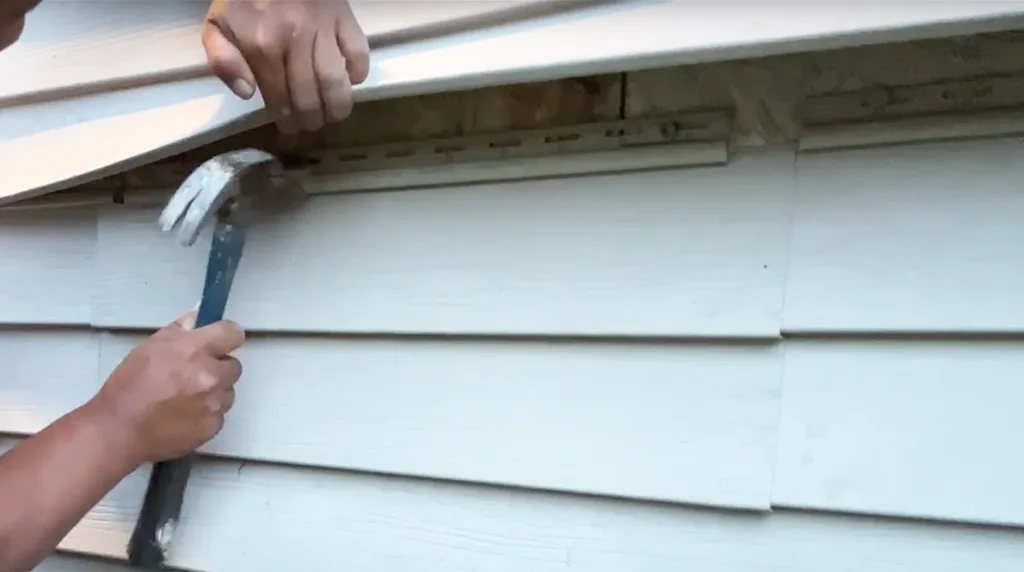
We regret to inform you that the beautiful siding on your home won’t last forever. However, with minor repairs and a few simple cleaning tactics, you should be able to extend its life and maintain your home’s stunning curb appeal. You may have noticed that your vinyl siding has cracked, perhaps due to the fall out of a severe storm or just regular wear and tear over time. We’re here to tell you that a complete siding replacement is not your only option. Some minor maintenance may just be needed [sigh of relief].
Signs That It’s Time to Repair Vinyl Siding or Replace
Even though your vinyl siding can look solid without damage, some damage is hard for people to spot. Remember that your house siding is more important than simply enhancing your house’s beauty. Keeping vinyl siding in top condition is crucial so it looks good and protects your home’s structural integrity. A small vinyl siding hole or loose siding can damage the wood underneath, causing damage to the home’s exterior and interior.
You want to move
It is an excellent investment to boost your resale value and curb appeal. Just look at the homes in your neighborhood and rank them by curb appeal. Is your home in the top 10? You don’t want potential buyers to notice damaged vinyl siding.
Mold and Moisture are detected
It can be difficult to pinpoint all affected areas, so there may be better long-term solutions than repairing vinyl siding. Replacement siding on the entire home coupled with insulation may be the safest and healthiest way and less hassle over spot-fixing existing siding pieces.
Warping
Michigan’s frigid winters and humid summers can wreak havoc on your existing vinyl siding, causing you to repair vinyl siding or replace siding—low and high temperatures cause vinyl siding pieces to shrink and expand. If your installer nailed a piece of vinyl siding too close to another, it can cause the siding piece to look wavy when the weather changes dramatically.
What is the life expectancy of vinyl siding on a house?
Vinyl shingles were mainly popular in the 1960s but have become popular today. They are durable, and materials and installation methods have improved, with an average lifespan of 30-40 years. It depends on how often they receive damage and how frequently you repair it to determine their lifespan. However, vinyl is easy to maintain; if neglected, issues may arise and cost you significant repair costs, especially if you need to be more handy.
Before You Begin Vinyl Siding Repairs

You can use several tools to fix a damaged vinyl siding panel – minor or major. It’s also essential to use safety equipment and have assistance if a ladder is needed to reach the area of concern. Here’s a list of tools you may need in your arsenal before you begin to tackle broken vinyl siding and or vinyl siding holes and dents:
- Utility knife or Sharp razor blade (several extras with a sharp blade)
- Zip tool (siding removal tool; see image above)
- Markers/sharp pencils
- Duct tape
- Pry bar
- Hammer
- Safety glasses
- Putty knife
- Exterior calk (paintable optional, or tube of putty or filler.) and caulk gun
How to Repair Cracks and Holes in Vinyl Siding
After noticing the need for siding repairs, you should consider the easy and inexpensive methods first. The hole sizes are essential to determining the siding’s required repair methods for holes under 1.2 cm, cap with a bit of caulk, filler, or putty. You can patch holes up to 1 inch in length using vinyl siding patch kits. Larger holes need the two additional techniques described here.
How much does it cost to repair one piece of siding?
The average starting cost for the siding repair is approximately $100. Certain variables, such as the quality and brand of the materials and your home’s design, should be accounted for. If you require a professional, the quality of labor can affect the cost of replacing siding.
How to Fix Dents or Holes in Vinyl Siding

When your siding has small holes or dents, you should first purchase paintable caulk, rags for wiping excess caulk, and a utility knife. Once the caulk is dry, select a matching exterior paint and an artist paintbrush for application. Paint does two things: it prevents further damage from forming and provides better curb appeal.
Repairing a Hole in Your Vinyl Siding With Caulk Gun
With cold winters and hot summers in Michigan, splinters can occur. Filling in holes is simple enough. Don’t worry too much if you do not get the perfect color for vinyl siding. If the damage is noticeably visible, you can mix white or color-match the exterior caulk to conceal the hole.
Clean the Damaged Area
The caulking is a textured and durable product, and you need a clear surface to achieve optimum adhesion. First, use a putty knife to knock down any rough edges. Next, use 220-grit sandpaper to rough the area—clean dirt and debris with hot, soapy water and a microfiber cloth.
Prepare the Caulk Gun
Cut the tip off the caulking tube using the caulk gun’s spout cutter at a 45-degree angle. Puncture the seal with the seal punch tool. Look for the punch tool toward the front end of the gun. Load the gun by pulling the rod back and squeezing the trigger slightly to tighten the tube.
Begin Filling the Hole
Place the caulk tube nozzle into the siding hole, then fill it with caulk by squeezing the trigger. Overfill the hole slightly to complete it and prevent water from leaking. Next, dampen your cleaning rag and wipe until the caulk is relatively even with the siding’s surface.
Let the Caulk Dry
Let it dry for as long as the manufacturer suggests. Then, scrape excess caulk using a scraper or utility knife. Lastly, you can paint the hole with a fine-tip artist’s brush after it’s dried and cleaned of any loose remaining adhesive.
How to Fix Large Siding Holes With a Patch Kit

Vinyl siding patches can mask dents, cracks, or holes and protect against future damage. You can find vinyl siding patch kits at your neighborhood hardware store or online. Review the instructions for installing vinyl siding patches. Cut the patch to fit over the repair area.
Applying a Patch to Damaged Vinyl Siding Panels
Begin by cleaning the surface around the hole with soap and water. Give it ample time to dry. Next, remove the backing of the adhesive patch. Press it on the damaged panel for a few seconds and push out any bubbles using a utility knife. Get exterior paint color-matched to the damaged panel and apply a series of coats to blend in the color.
Signs That It’s Time to Replace Your Siding Panels
Remember that house siding is more important than simply enhancing your house’s beauty. It is crucial to keep it in top condition, and if the constructional integrity of the siding panels is compromised, it can also compromise your home’s integrity. Cracks, warping, and other signs are more than a cosmetic problem; they signal it’s time to replace. If repairing the vinyl siding isn’t simple and you want a replacement, you can use spare siding.
Replacing a Vinyl Siding Panel
Begin by marking a straight line vertical on both sides of the damaged area. You need your caulk gun, zip tool, pry bar, and razor to replace the section you are cutting out. Make sure you have a flat work surface and the extra panel handy.
Cut Out Damaged Siding panels
Next, cut from top to bottom, being careful not to cut the panel below. Afterward, hook the damaged section from the lower side lip using your zip tool and pull. Finally, pry any nails above to make the piece accessible. You may have to pry loose the panel above to access the nails.
Install the Patch
Overlap the damaged piece over the new piece and mark at least 2 inches wider on each side before cutting with your sharp blade. To snap the new panel over the removed section, you first need to snip off the lip at the bottom of the latest piece between the 2 inches on each side. Using caulk, outline the edge of the section you cut out and press the patch piece over it. Be sure to lock the bottom in on both sides of the overlapping part of the patch. You can use duct tape to secure your patch until the caulk’s recommended dry time has passed.
How to Separate a Broken Panel
If much patchwork is required to repair damage to your siding, you can remove and replace the damaged vinyl panels. The first step involves pulling the zip tool along the lower edge of the siding to remove the broken panel.
Remove Nails Above the Damaged Area
Unhook panels parallel to the damaged one to access the nails. You must lift the panel slightly above the top to see the nails securing it. Using a hammer or prybar, remove the nails from the damaged panel.
Prepare Your New Piece of Replacement Vinyl Siding
Using the piece removed as a template, cut the replacement piece of vinyl into the desired length. Alternatively, use a tape measure to determine the length. To avoid issues with fit, measure twice and cut once.
Install the New Vinyl Panel

Install the replacement panel and press against it to hold the top lip in place. Install the nails needed for the backing. Have a partner secure the panels while nailing or using your other hand.
Taking Care of Your Vinyl Siding
While vinyl siding requires little attention, you can maintain it with regular cleaning. Cleaning your siding using a power washer is simple, but please follow the washing instructions and consult the manufacturer’s manuals for any defects before attempting this procedure.
When to Call a Professional

When evaluating whether it’s worth it to call an expert, consider your project’s scope and the amount of time required of you first. Ask yourself if you have the skill to plan and execute the repairs. In addition, siding experts typically offer warranties for craftsmanship. If you do it yourself, only the manufacturer’s warranty is available. To avoid voiding your warranty, you must read and understand warranties and follow installation instructions accurately. Contact us today and book an estimate. We can help you fix the damaged area of your vinyl siding!